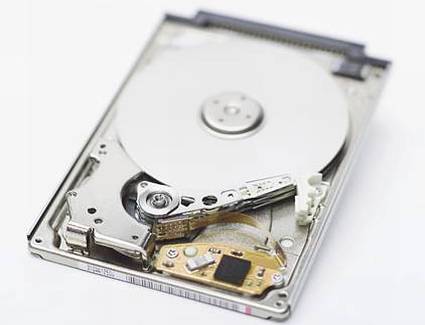Grain-Based Magnetic Recording Could Give Us 50 TB HDDs
Every once in a while, when the physical limits of magnetic HDD recording are approached, the hard drive industry experiments with new magnetic recording technologies.
The goal is to increase the maximum storage density of a technology that is, in its very basics, almost 40 years old.
About 20 years ago, the industry believed that traditional horizontal magnetic recording techniques would top out at a density of about 100 Gb/square inch. 15 years ago, Seagate began experimenting with heat-assisted recording technology acquired with Quinta, which promised up to 250 Gb/square inch, but was able to push the boundaries up to 250 Gb/square inch in regular magnetic recording -- until the current perpendicular magnetic recording (PMR) arrived in 2006, which is now believed to take the industry just over 1 Tb/ square inch.
Seagate, for example, is working on heat-assisted magnetic recording again, but there may be another opportunity: Grain-based magnetic recording, which apparently allows up to 10 Tb/square inch. In more common terms, this would enable hard drives in the range of up to 50 TB for 3.5-inch models.
According to an article over at X-bit labs, this technology would be "storing each data bit in a single magnetic grain of the thin film of the recording medium, rather than in several grains as in conventional hard drives". Initial test results at the A*Star Data Storage Institute appear to be encouraging and are good enough to be considered for a future magnetic recording type, which could enable the industry to elude, once again, the rather expensive move to heat- or laser-assisted magnetic recording.
Contact Us for News Tips, Corrections and Feedback
Get Tom's Hardware's best news and in-depth reviews, straight to your inbox.

Wolfgang Gruener is an experienced professional in digital strategy and content, specializing in web strategy, content architecture, user experience, and applying AI in content operations within the insurtech industry. His previous roles include Director, Digital Strategy and Content Experience at American Eagle, Managing Editor at TG Daily, and contributing to publications like Tom's Guide and Tom's Hardware.
-
Onus A dumpster is a lot bigger than the can under your desk, but all it holds is a lot more garbage.Reply
-
inerax Fun thing is people will find a way to fill it. People said i would never fill my 3tb.... I got news for them. I may have lots of junk but I still filled it.Reply
Wonder what tech is next for mass storage. -
bison88 Is this relevant to HAMR (or TAMR) currently being developed which also promises upto 50TB hard drives in the future, or is this something completely different? Would this have the ability to be combined with HAMR/TAMR to further enhance the storage capacities the same way HAMR/TAMR + BPM is expected to far exceed 50TB much later down the road?Reply
This just leaves me with more questions. -
ohim Give them 50 TB drives and windows 10 will eat 5-10 TB! I still remember being able to make Windows XP as little as 300 - 500 MB and today we have 25 GB for about the same thing just with more eye candy.Reply -
gm0n3y This doesn't sounds like a new technique, it is just using smaller and smaller numbers of magnetic grains to hold a bit (until you are down to a single grain). While this certainly isn't trivial, it's not exactly a new idea.Reply -
ttg_Avenged 10,000,000 songs. That is the actual number of how many 4 minute MP3s a 50TB HDD could hold, binary. Not enough.. 10 mil, dang.Reply
No but, I think they should forget that, and research into a much faster technology, such as NANDS on SSDs. -
ricdiculus Man that seems awesome and scary at the same time. Could use this in a HTPC but what about when it fails? I'd say raid is mandatory with this.Reply
